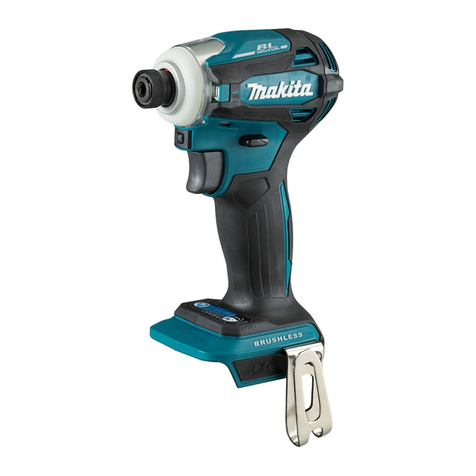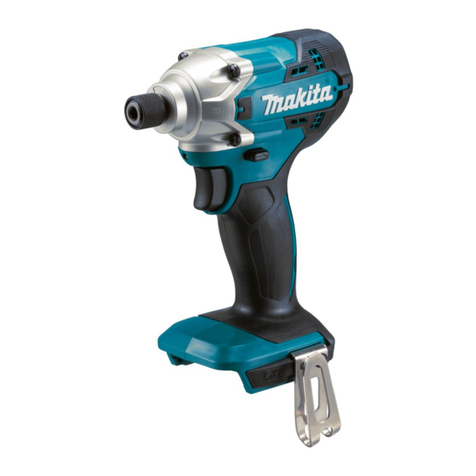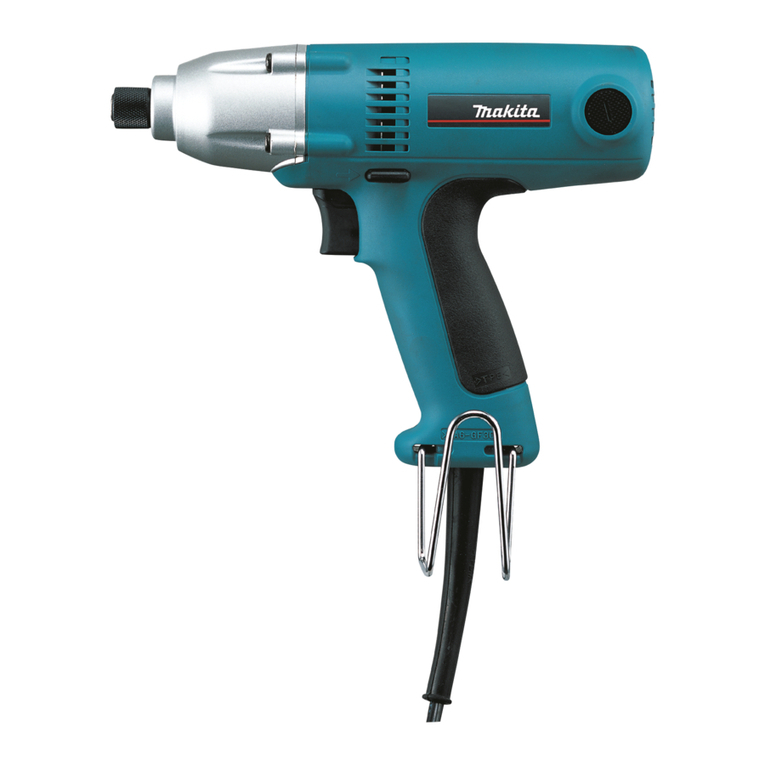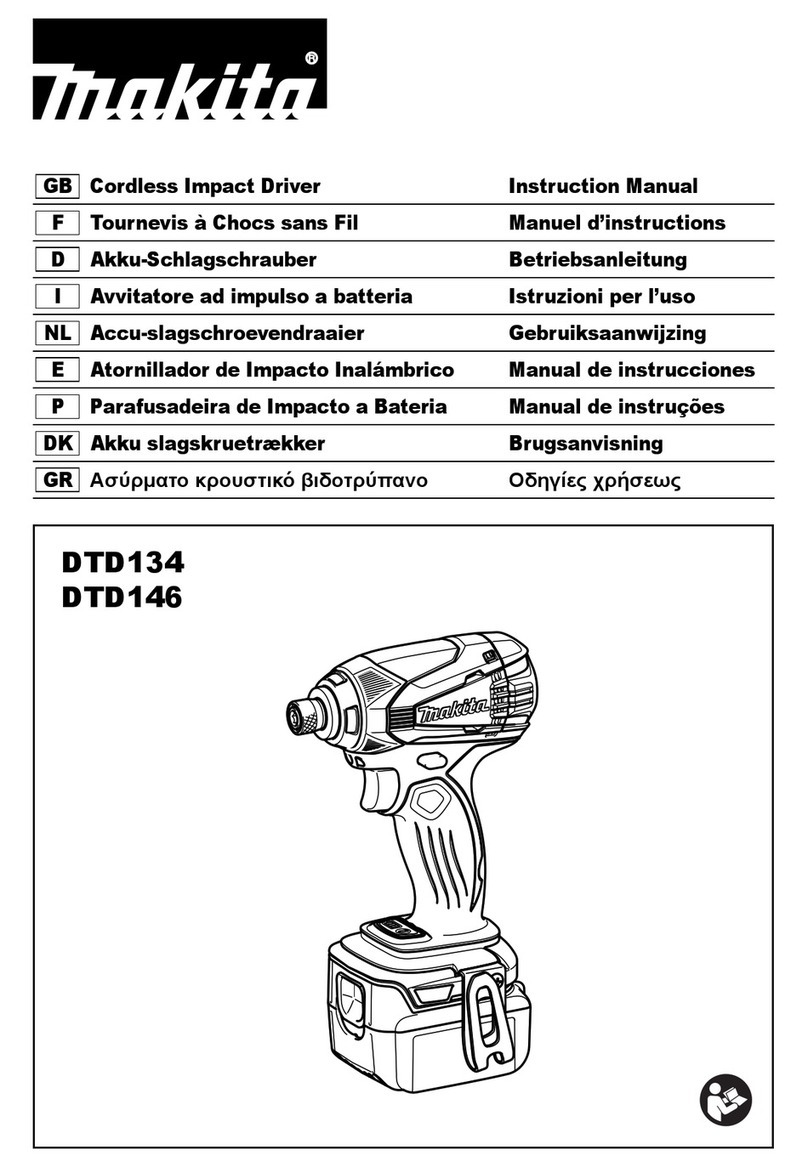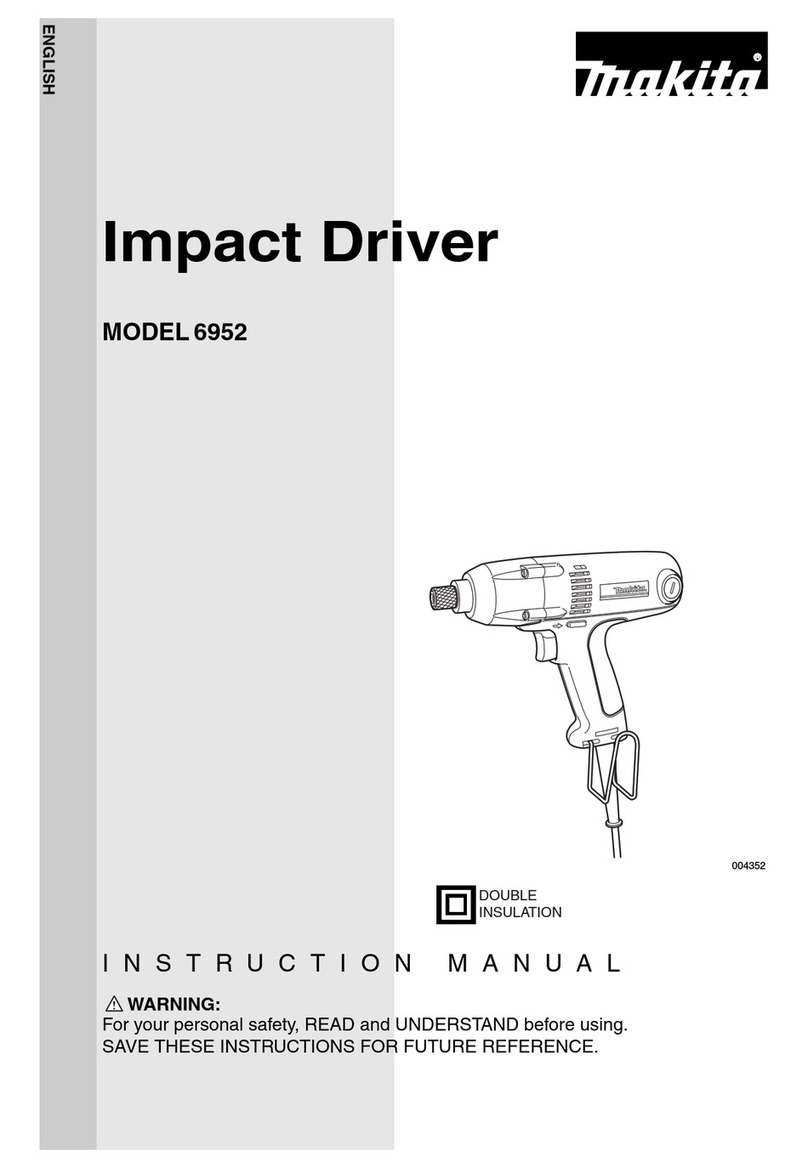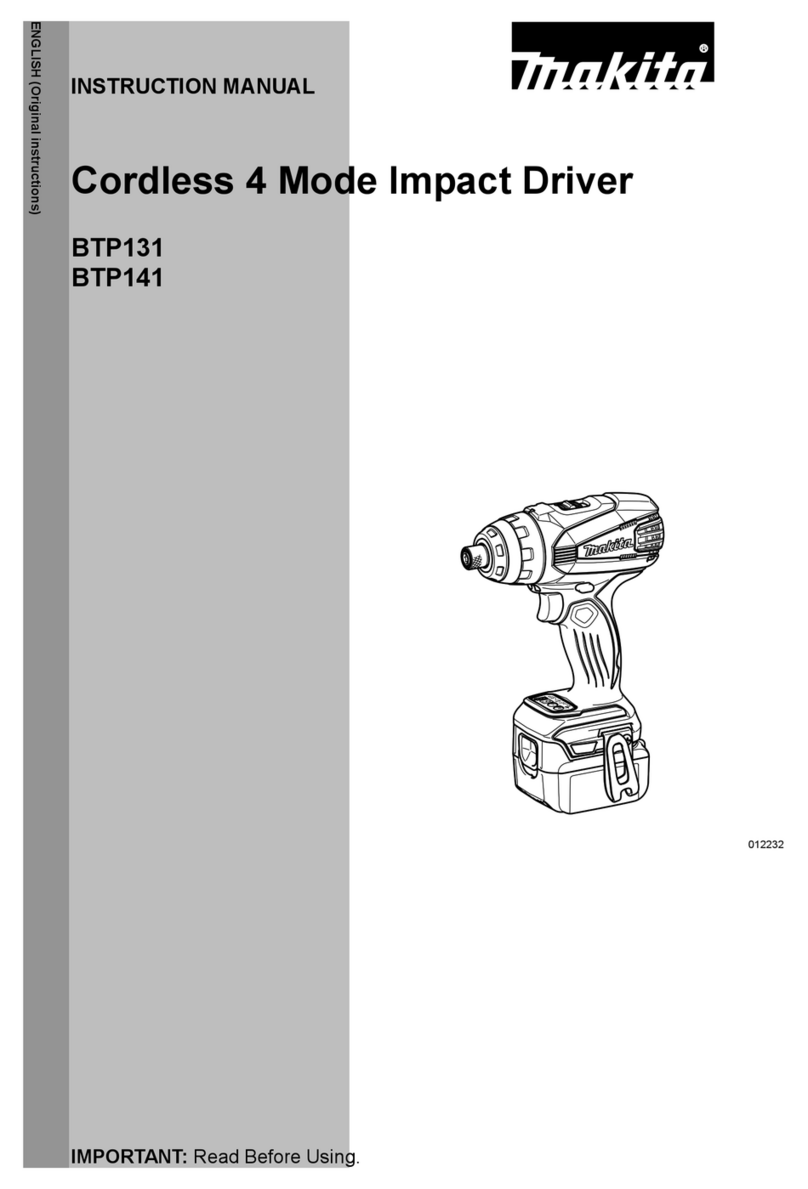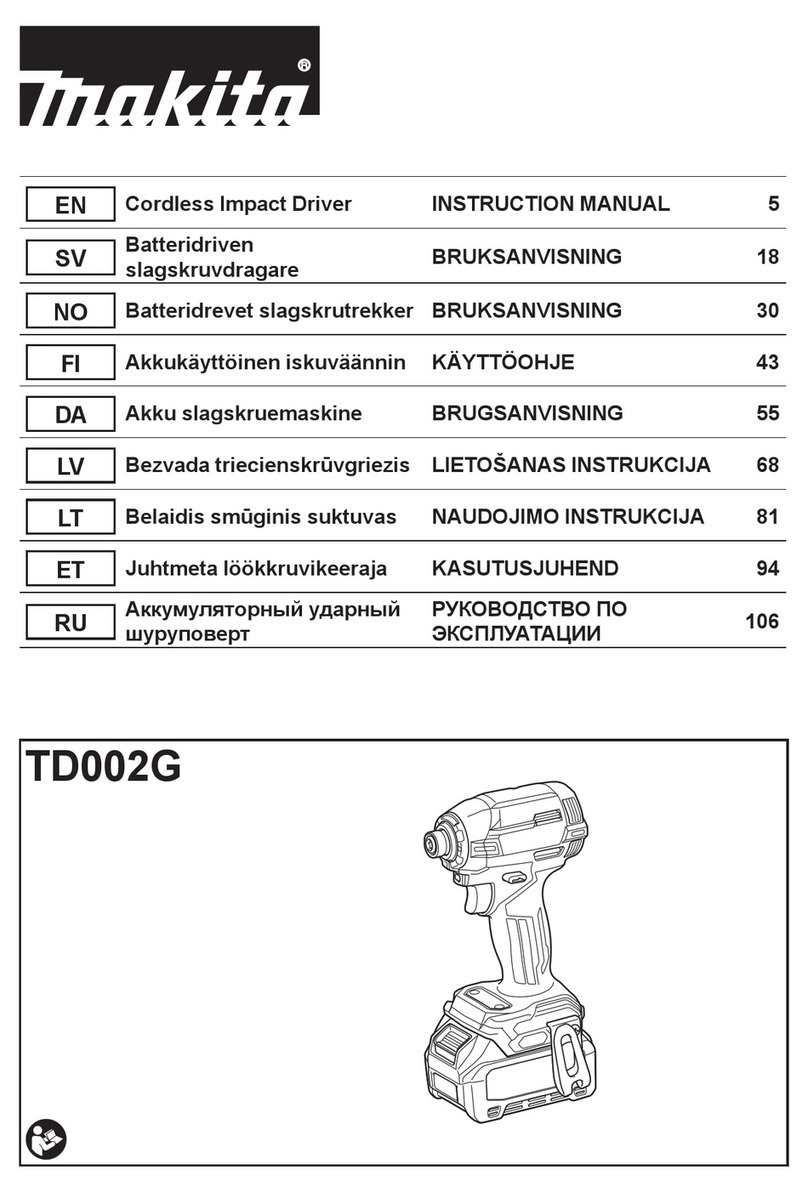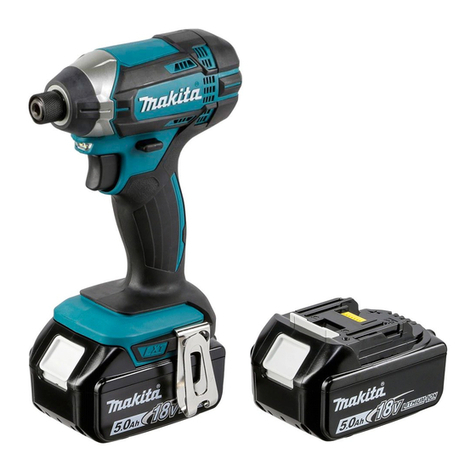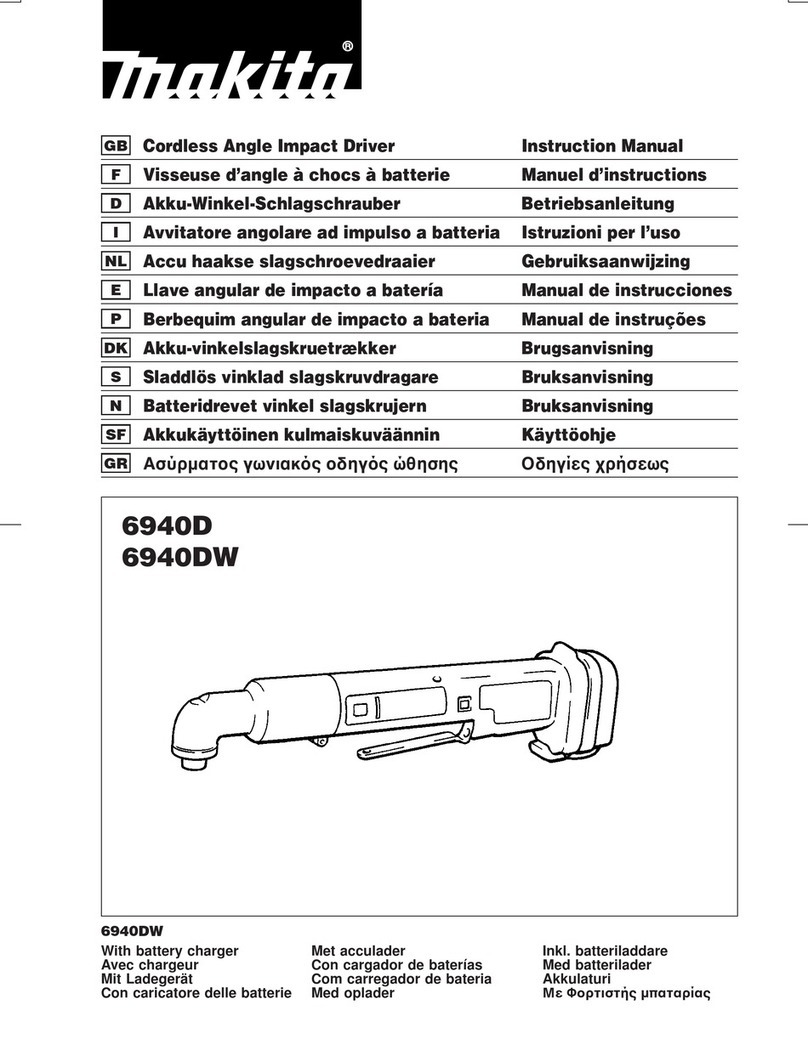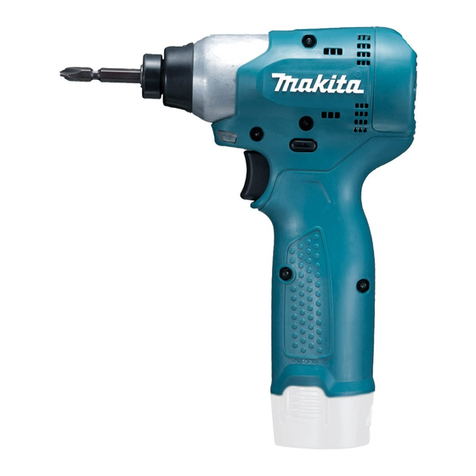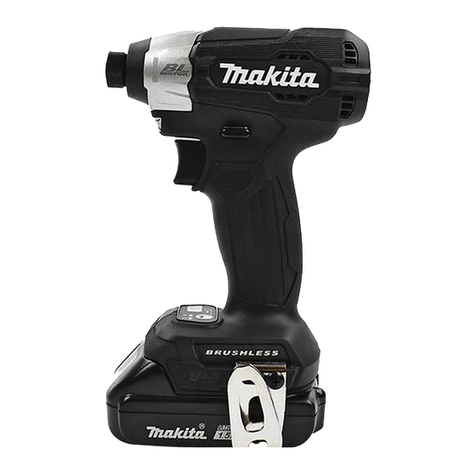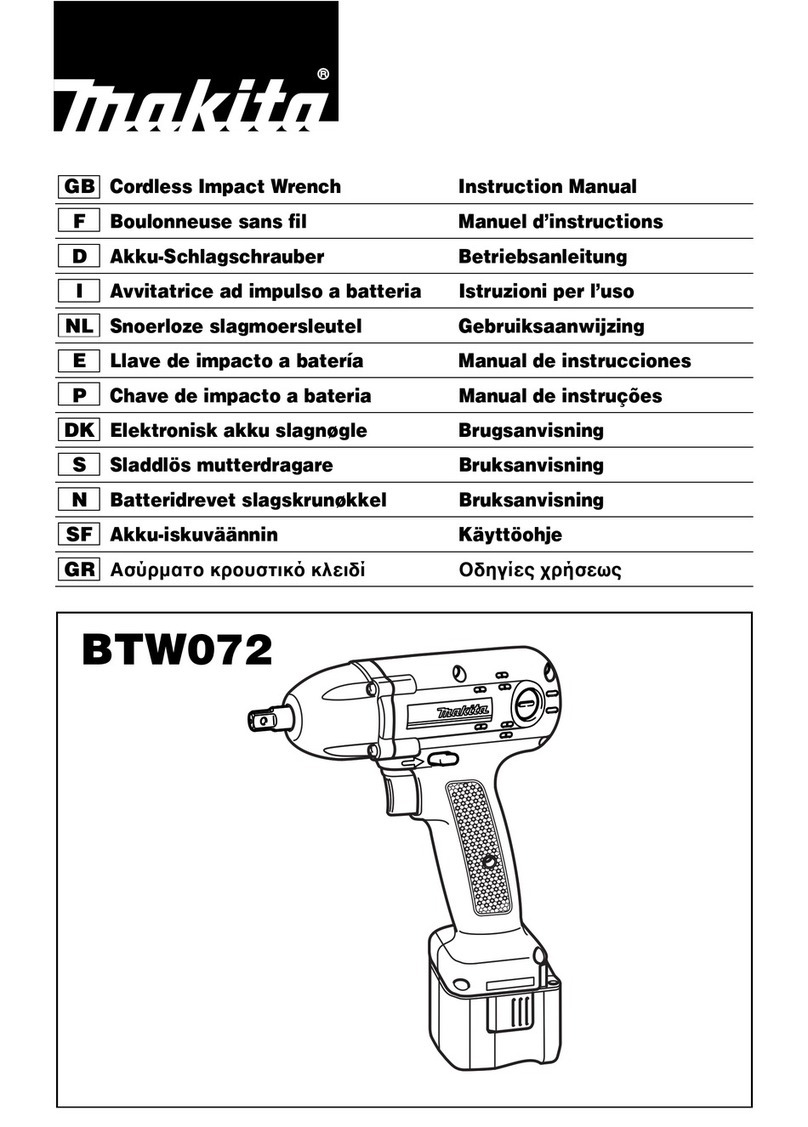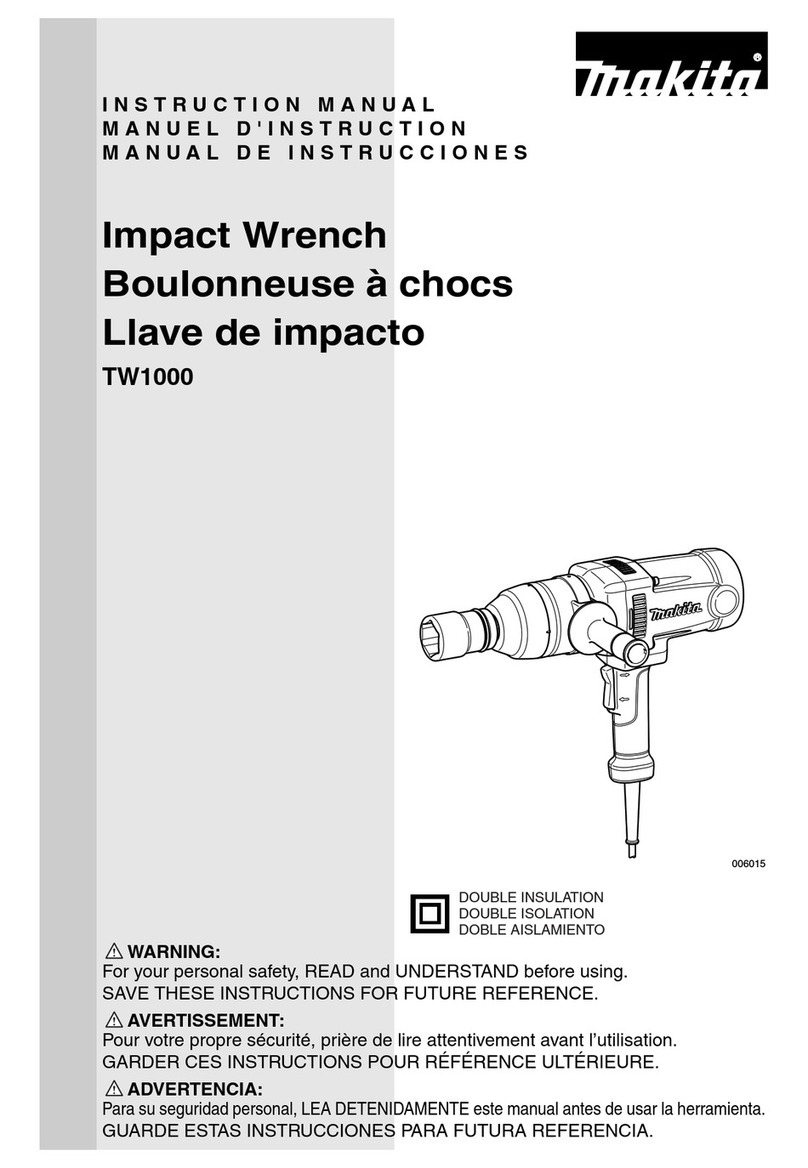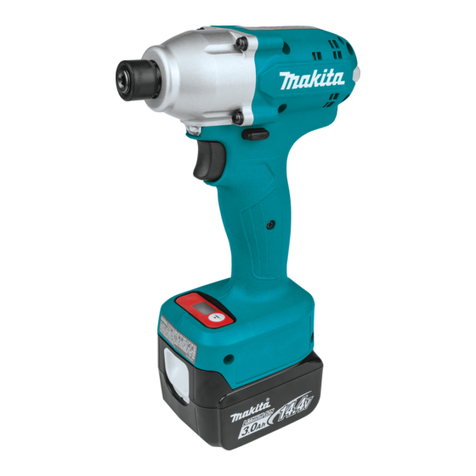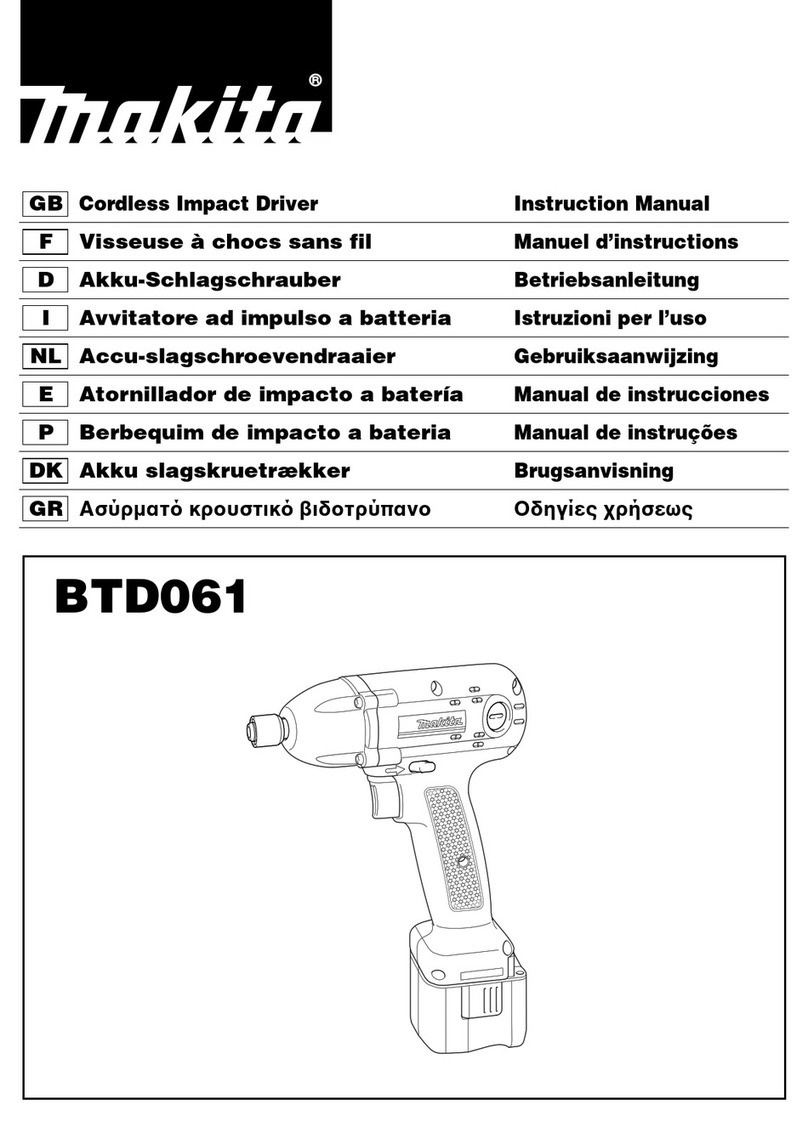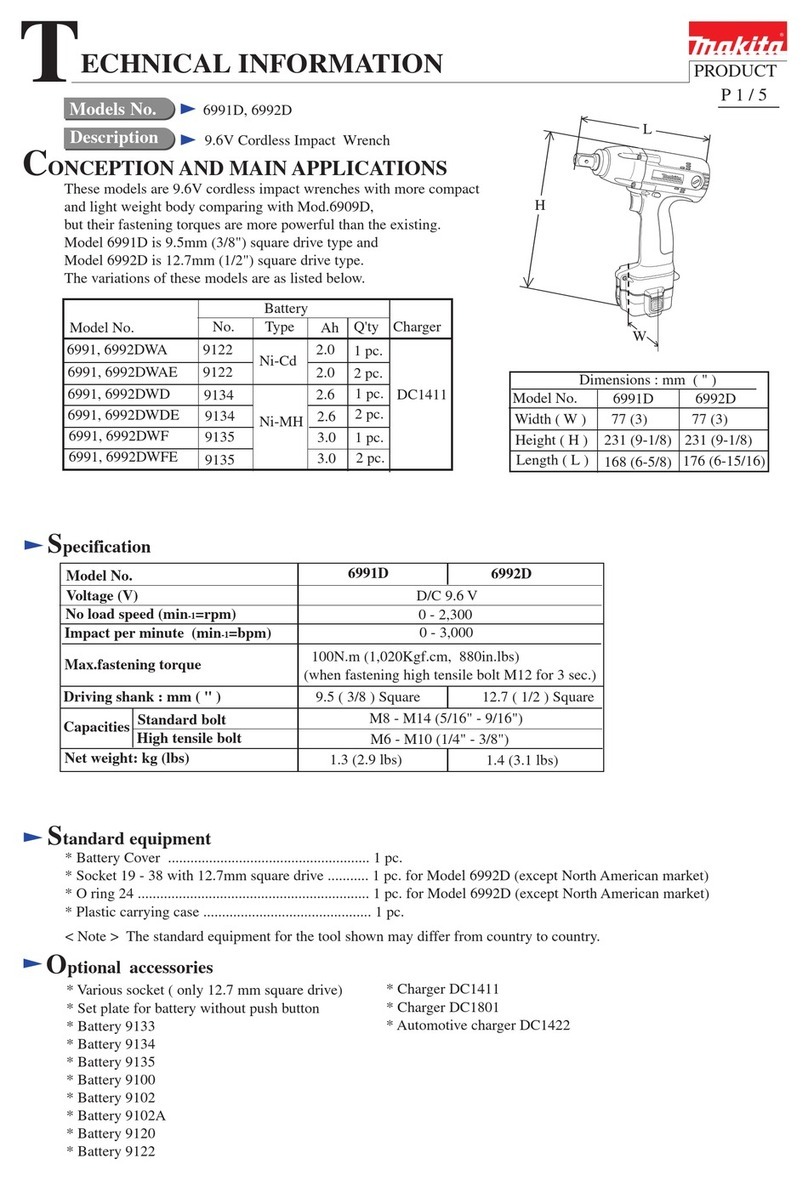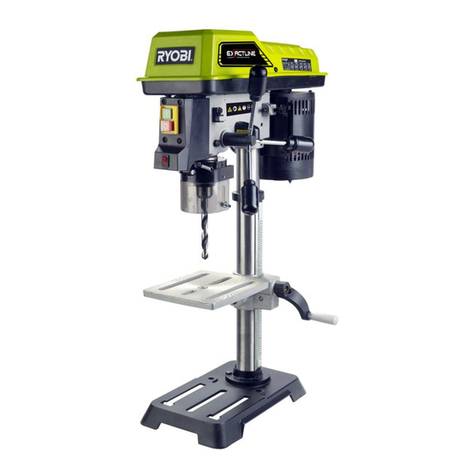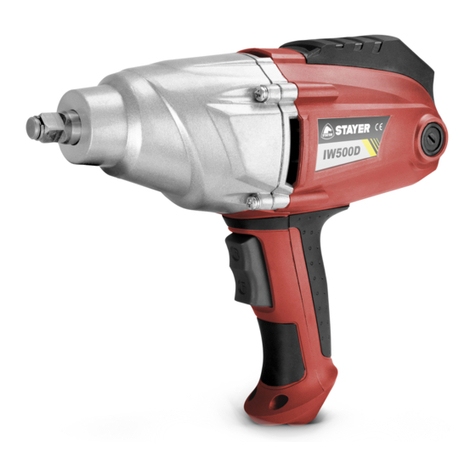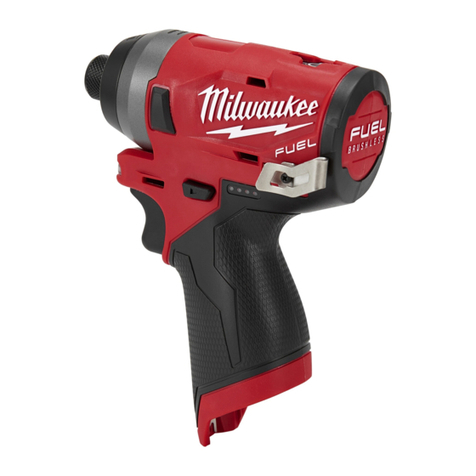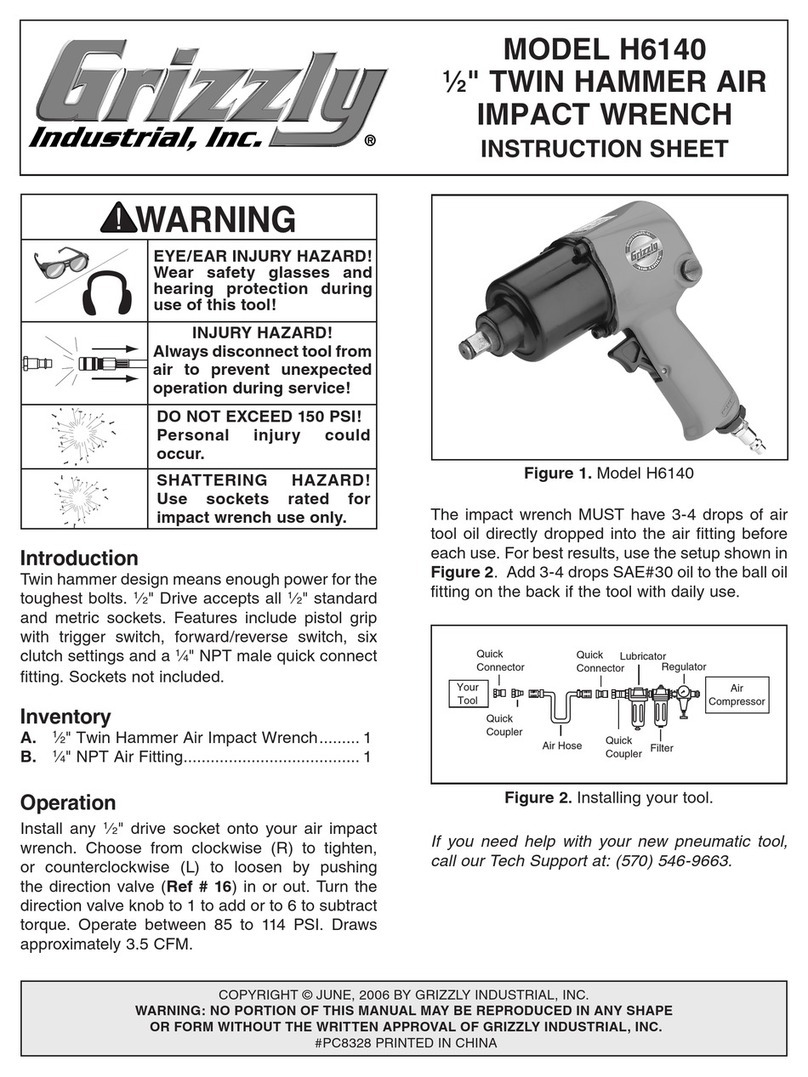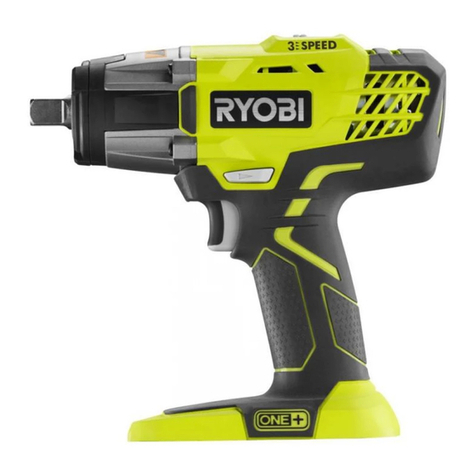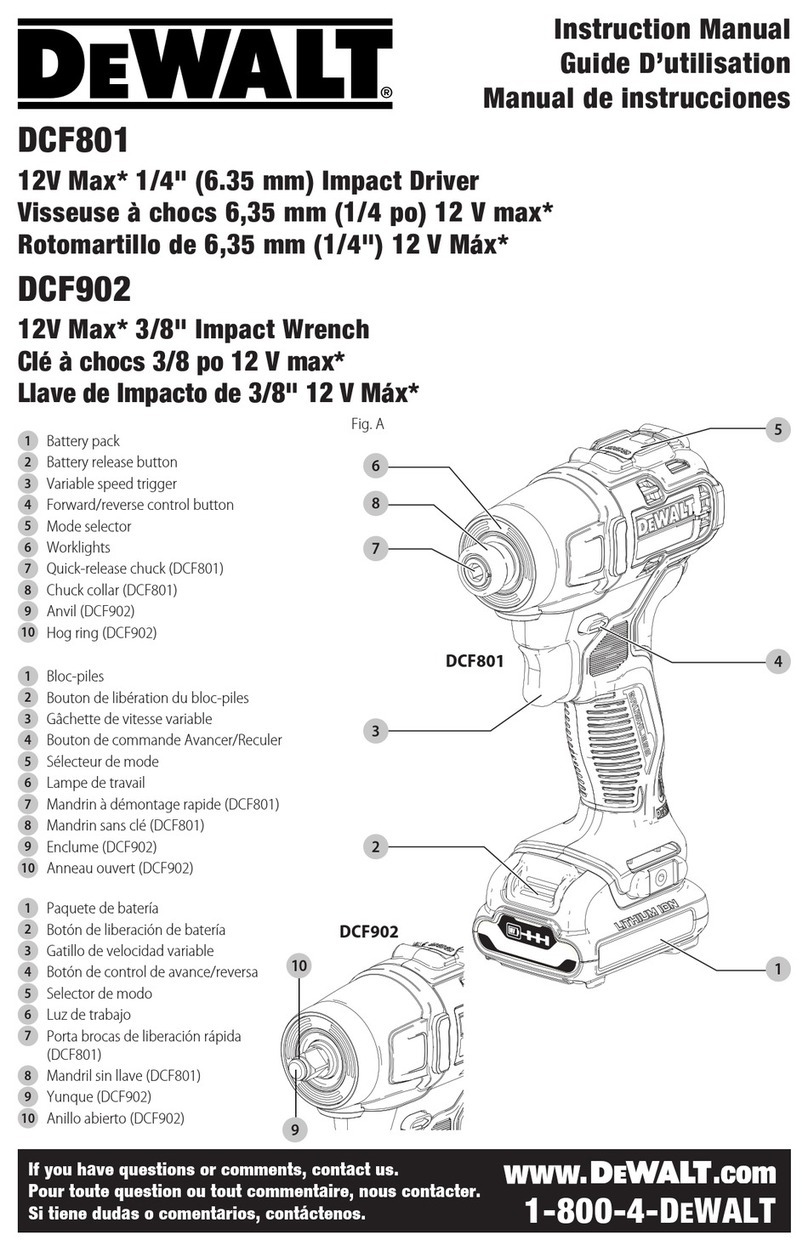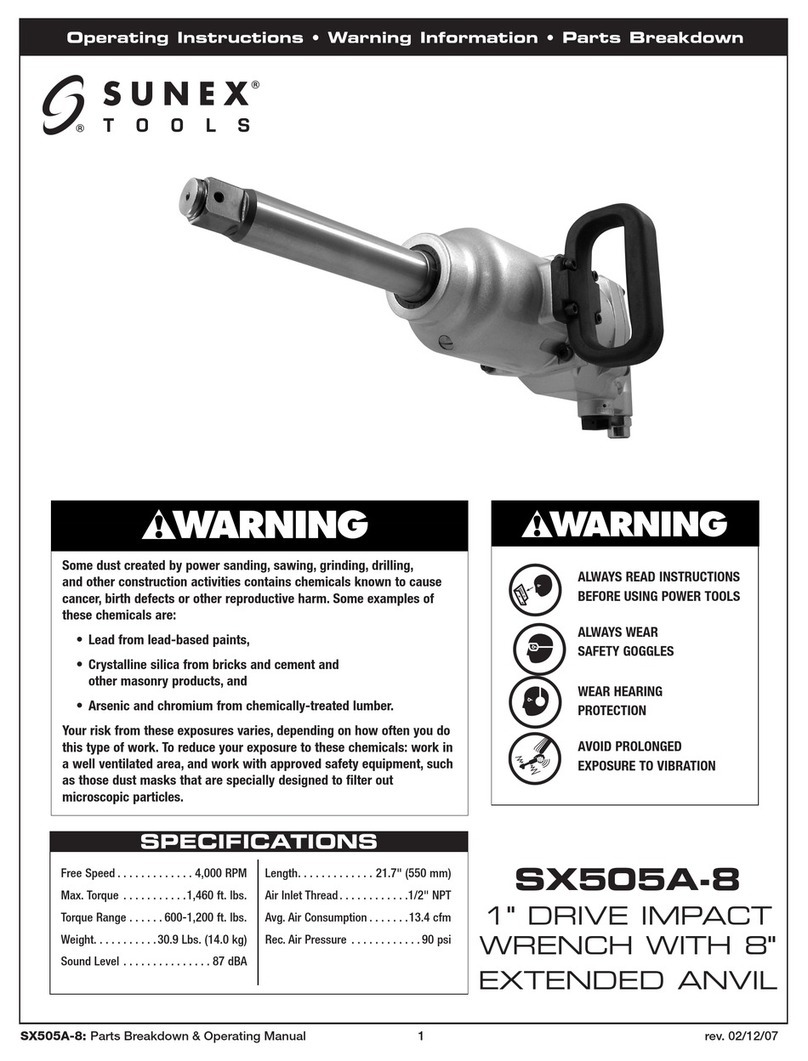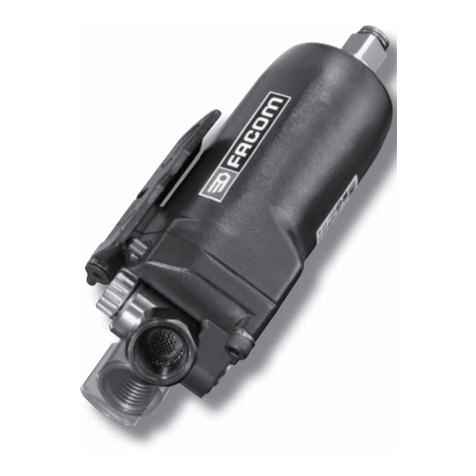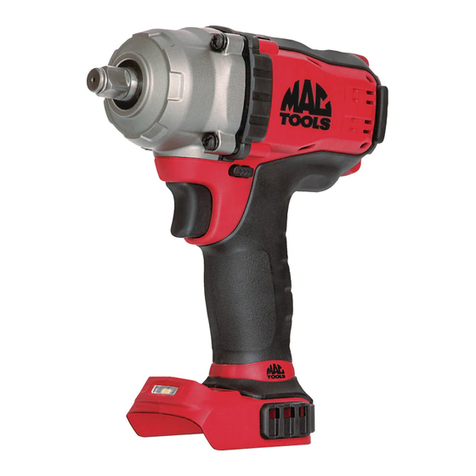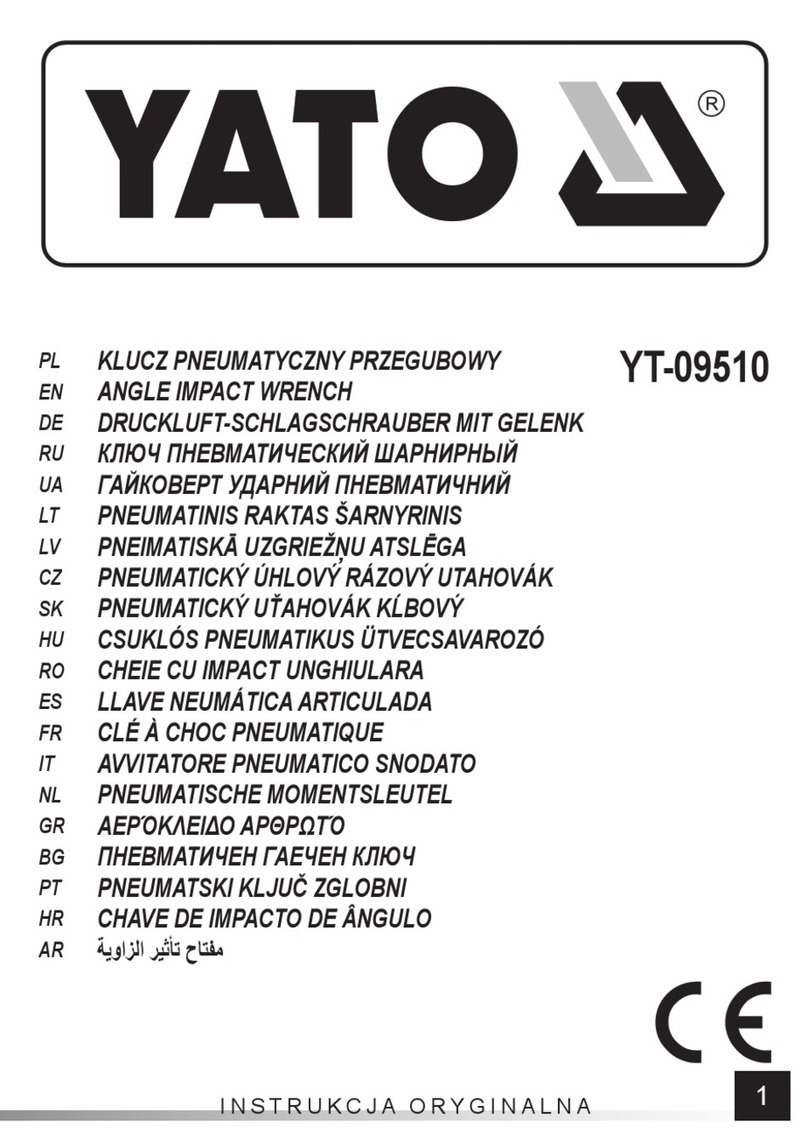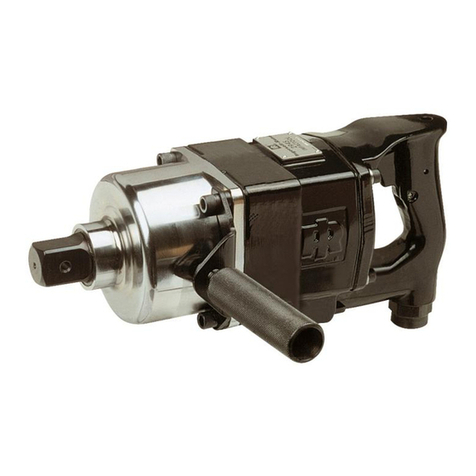8
Hook (Fig. 8)
The hook is convenient for temporarily hanging the tool.
This can be removed without using a tool. This can be
installed on either side of the tool.
Installing and removing hook
A) Removal
Remove the battery cartridge from the tool.
Place the tool in a stable and level surface.
Expand an far end of the hook outward and slide it down
while expanding. (Fig. 9)
Expand the other far end in the same manner. (Fig. 10)
Keeping the hook in this position, rotate down to the
angle 90° and remove it by pulling in the direction of
arrow as shown in the figure. (Fig. 11, 12 & 13)
B) Installation
Remove the battery cartridge from the tool.
Place the tool in a stable and level surface.
Hold both hooking ends in the upper position and expand
the upper part of the hook. (Fig. 14)
Insert both ends, one by one, of the hook into the
grooves in the tool housing. (Fig. 15 & 16)
Keeping the hook in this position, rotate it upwards to the
angle 90° and push both ends fully in the direction of
arrow as shown in the figure. (Fig. 17 & 18)
Storing the tool in the standard carrying case
The tool can be stored with the hook installed on it.
Always place the tool inside the carrying case so that the
installed hook faces upward. (Fig. 19)
When the hook is installed on the right side of the tool in
back view, place the tool upside down with the hook fac-
ing up. (Fig. 20)
OPERATION
The proper fastening torque may differ depending upon
the kind or size of the screw/bolt, the material of the
workpiece to be fastened, etc. The relation between fas-
tening torque and fastening time is shown in the figures.
(Fig. 21 & 22)
Hold the tool firmly and place the point of the driver bit in
the screw head. Apply forward pressure to the tool to the
extent that the bit will not slip off the screw and turn the
tool on to start operation.
NOTE:
• Use the proper bit for the head of the screw/bolt that
you wish to use.
• When fastening screw M8 or smaller, carefully adjust
pressure on the switch trigger so that the screw is not
damaged.
• Hold the tool pointed straight at the screw.
• If you tighten the screw for a time longer than shown in
the figures, the screw or the point of the driver bit may
be overstressed, stripped, damaged, etc. Before start-
ing your job, always perform a test operation to deter-
mine the proper fastening time for your screw.
The fastening torque is affected by a wide variety of fac-
tors including the following. After fastening, always check
the torque with a torque wrench.
1. When the battery cartridge is discharged almost
completely, voltage will drop and the fastening
torque will be reduced.
2. Driver bit or socket bit
Failure to use the correct size driver bit or socket bit
will cause a reduction in the fastening torque.
3. Bolt
• Even though the torque coefficient and the class of
bolt are the same, the proper fastening torque will
differ according to the diameter of bolt.
• Even though the diameters of bolts are the same,
the proper fastening torque will differ according to
the torque coefficient, the class of bolt and the bolt
length.
4. The manner of holding the tool or the material of
driving position to be fastened will affect the torque.
5. Operating the tool at low speed will cause a reduc-
tion in the fastening torque.
MAINTENANCE
CAUTION:
• Always be sure that the tool is switched off and the bat-
tery cartridge is removed before attempting to perform
inspection or maintenance.
Replacing carbon brushes (Fig. 23 & 24)
Remove and check the carbon brushes regularly.
Replace when they wear down to the limit mark. Keep
the carbon brushes clean and free to slip in the holders.
Both carbon brushes should be replaced at the same
time. Use only identical carbon brushes.
Use a screwdriver to remove the brush holder caps. Take
out the worn carbon brushes, insert the new ones and
secure the brush holder caps.
To maintain product SAFETY and RELIABILITY, repairs,
any other maintenance or adjustment should be per-
formed by Makita Authorized Service Centers, always
using Makita replacement parts.
ACCESSORIES
CAUTION:
• These accessories or attachments are recommended
for use with your Makita tool specified in this manual.
The use of any other accessories or attachments might
present a risk of injury to persons. Only use accessory
or attachment for its stated purpose.
If you need any assistance for more details regarding
these accessories, ask your local Makita service center.
• Screw bits
• Various type of Makita genuine batteries and chargers
• Plastic carrying case
